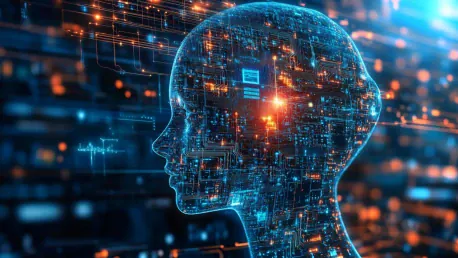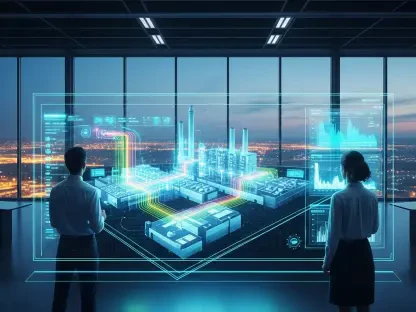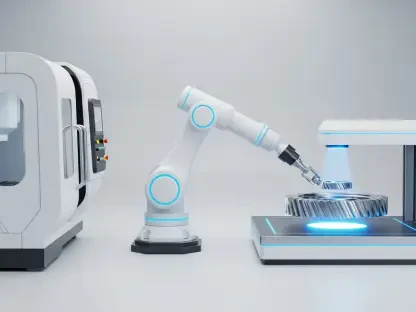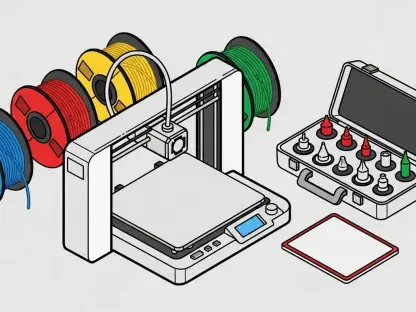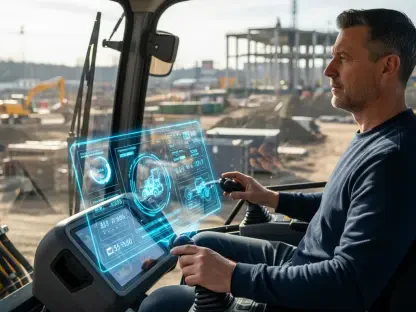Artificial intelligence (AI) is revolutionizing the manufacturing industry, driving a shift in how operations are conducted. This transformation extends to the enhancement of efficiency and worker training, making manufacturing safer, more effective, and appealing to the younger workforce. The integration of digital technologies, automation, and Generative AI is ushering in a new era for manufacturing, rooted in improved practices and innovative solutions.
Revolutionizing Operations with AI
Automation and Digitalization
The integration of AI-driven automation and digital solutions has become fundamental in modern manufacturing. These technologies streamline processes, reduce human error, and enhance productivity by automating routine tasks. The transition from traditional methods to digital platforms accelerates operations and paves the way for more dynamic manufacturing environments. For instance, AI-powered robots and machines can handle repetitive and physically demanding tasks, allowing human workers to focus on more complex and strategic activities. This not only boosts efficiency but also significantly reduces the risk of workplace injuries, creating a safer working environment.
In addition to improving operational efficiency, automation and digitalization bring about remarkable accuracy in manufacturing processes. Real-time data collection and analysis enabled by AI technologies ensure that any discrepancies are quickly identified and rectified. This proactive approach to quality control minimizes defects and waste, leading to cost savings and higher-quality products. Moreover, digital twins—virtual replicas of physical assets and processes—allow manufacturers to simulate and optimize production workflows before implementing them on the factory floor. This capability leads to better decision-making and continuous improvement in manufacturing operations.
Role of Generative AI
Generative AI, a subset of artificial intelligence, is pivotal in content creation and operational efficiency. By converting extensive documentation into succinct, digital work instructions, Generative AI offers a practical solution to keep workers informed and efficient. This transformation minimizes downtime and supports the rapid deployment of new procedures and training materials. For example, instead of sifting through lengthy manuals, workers can access concise, step-by-step instructions on their digital devices, making it easier to follow and execute tasks accurately. This shift not only saves time but also ensures that critical information is promptly and effectively communicated.
The impact of Generative AI extends beyond merely creating digital content; it also plays a crucial role in maintaining up-to-date information. Manufacturing environments are constantly evolving, with new technologies, processes, and regulatory requirements emerging regularly. Generative AI can effortlessly update training materials and work instructions to reflect these changes, ensuring that workers always have access to the most current and accurate information. This adaptability is especially valuable in industries where compliance with stringent standards and protocols is paramount. By leveraging Generative AI, manufacturers can stay ahead of the curve and maintain a competitive edge in the market.
Enhancing Worker Training and Engagement
Training Programs and Reskilling
In the context of an evolving manufacturing landscape, training programs are crucial. Ensuring frontline workers are proficient with new technologies involves continuous education and reskilling. AI-powered platforms enable manufacturers to impart essential knowledge effectively while maintaining high health and safety standards, which are crucial for a thriving workforce. Advanced training programs can be customized to meet the specific needs of individual workers, offering personalized learning experiences that address their unique skills and knowledge gaps. This targeted approach to training ensures that all employees, regardless of their starting point, can reach their full potential.
AI-driven training platforms also facilitate real-time feedback and assessment, allowing workers to track their progress and identify areas for improvement. Interactive modules, simulations, and gamification elements make learning more engaging and enjoyable, increasing overall participation and retention rates. Furthermore, the use of AI in training extends to virtual reality (VR) and augmented reality (AR) applications, which provide immersive, hands-on experiences without the risks associated with physical training. These innovative tools allow workers to practice and refine their skills in a safe, controlled environment, enhancing their confidence and competence on the job.
Connected-Worker Platforms
AI-driven connected-worker platforms bridge the gap between digital knowledge and practical application. These platforms facilitate the generation and delivery of content tailored to frontline workers, making it accessible and easier to understand. This integration ensures that training is efficient and not disruptive, allowing workers to stay on schedule while enhancing their skills. By leveraging advanced analytics and machine learning algorithms, connected-worker platforms can identify patterns and trends in worker performance, providing valuable insights for continuous improvement. This data-driven approach helps organizations optimize their training programs and address potential issues before they escalate.
Moreover, connected-worker platforms enable seamless communication and collaboration among team members, regardless of their physical location. Through real-time messaging, video calls, and collaborative workspaces, workers can easily share knowledge, seek assistance, and provide feedback. This connectivity fosters a culture of teamwork and mutual support, which is essential for achieving operational excellence. Additionally, connected-worker platforms can integrate with existing enterprise systems, such as enterprise resource planning (ERP) and manufacturing execution systems (MES), to provide a comprehensive view of the entire production process. This holistic perspective allows for more informed decision-making and better alignment of workforce activities with organizational goals.
Addressing Content Accessibility and Retrieval
AI-Powered Content Transformation
Content transformation using AI significantly reduces the time needed to create and convert training materials. By efficiently transforming existing content into digital formats, AI-powered tools ensure that work instructions and procedural documents are readily available and precise. This swift content accessibility is essential for maintaining efficient workflows. For instance, AI algorithms can automatically categorize and index vast amounts of information, making it easy for workers to locate the specific content they need. This capability is particularly valuable in fast-paced manufacturing environments where timely access to accurate information can significantly impact productivity and quality.
AI-powered content transformation also enhances the consistency and clarity of training materials and work instructions. By standardizing the format and structure of digital documents, AI ensures that information is presented uniformly across the organization. This uniformity reduces the likelihood of miscommunication and errors, as workers receive clear and consistent guidance regardless of their role or location. Furthermore, AI can incorporate multimedia elements, such as images, diagrams, and videos, into digital content, making it more engaging and easier to understand. These visual aids can help workers grasp complex concepts more quickly and retain information more effectively.
Engaging Younger Workers
The younger workforce, particularly Gen Z, has distinct expectations regarding technology in the workplace. AI-enabled tools provide concise, easily accessible information that matches their preference for digital solutions. The use of AI to engage this demographic is critical in creating a more attractive and productive manufacturing environment. For example, mobile apps and wearable devices can deliver real-time updates and notifications, keeping workers informed and connected at all times. These digital tools align with the tech-savvy nature of younger generations, making them more likely to embrace and excel in their roles.
To further engage younger workers, AI can personalize the learning experience by tailoring content to individual preferences and learning styles. Adaptive learning systems powered by AI can analyze user behavior and performance to recommend relevant resources and training modules. This personalized approach not only enhances engagement but also ensures that workers receive the most relevant and impactful training. Gamification elements, such as rewards, badges, and leaderboards, can also be incorporated to make learning more fun and competitive. By creating an environment that values and supports continuous learning, manufacturers can attract and retain top talent from the younger workforce.
Multilingual Support and Enhanced Communication
Addressing Language Barriers
In a diverse manufacturing workforce, language barriers can impede efficiency and safety. AI-powered transcription tools translate content into multiple languages, ensuring all workers understand critical information. This capability promotes inclusivity and better comprehension, fostering a safer and more productive workplace. For instance, AI-driven language translation can convert training materials, safety protocols, and operational guidelines into various languages, making them accessible to non-native speakers. This ensures that all employees, regardless of their linguistic background, have the knowledge they need to perform their tasks effectively and safely.
AI-powered communication tools also facilitate real-time translation and interpretation during meetings, training sessions, and interactions between workers. This instant translation capability eliminates delays and misunderstandings, enabling seamless communication and collaboration among diverse teams. By breaking down language barriers, AI enhances the overall efficiency of manufacturing operations and promotes a culture of inclusivity and mutual respect. Additionally, AI can analyze language patterns and usage to identify potential misunderstandings or areas where additional clarification is needed. This proactive approach helps organizations address communication challenges before they impact productivity and safety.
Video Content and Instruction
Artificial intelligence (AI) is transforming the manufacturing industry by changing the way operations are conducted. This revolution in manufacturing involves not only automating processes but also significantly increasing efficiency and improving worker training. As a result, manufacturing is becoming safer, more effective, and increasingly appealing to younger generations who are technologically inclined. The integration of digital technologies, including automation and Generative AI, is creating a forward-looking era in manufacturing. These advancements are fostering better practices and encouraging innovative solutions that enhance productivity and quality. AI and automation are not just tools for increasing output; they are critical components in creating a modern, attractive workplace. By leveraging these technologies, companies can reduce errors, lower costs, and boost overall performance. Moreover, the focus on worker training ensures that employees are not left behind in this technological revolution. This holistic approach assures that the manufacturing sector remains competitive and cutting-edge.
